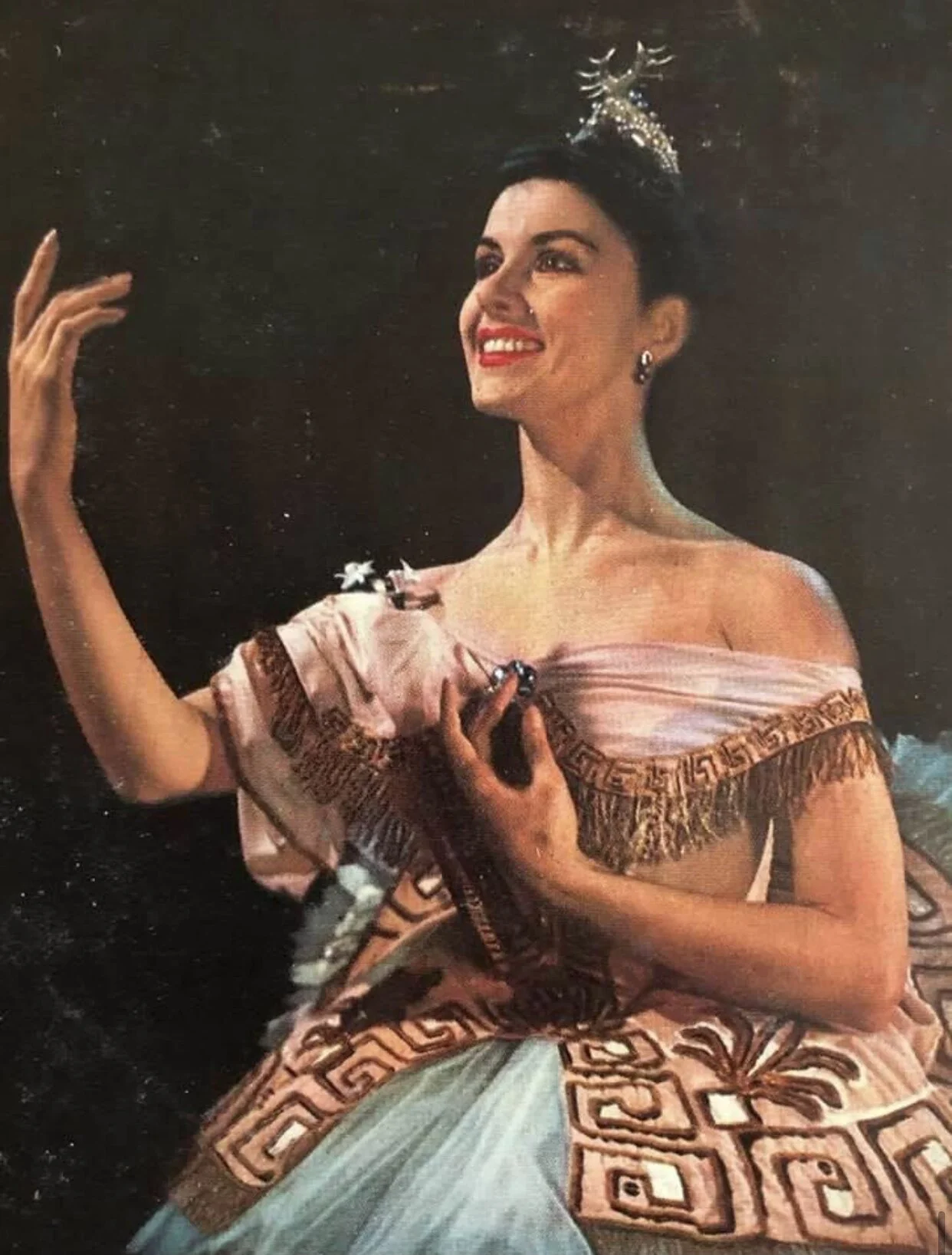Violetta Elvin at ninety-six
1, 2, 3, 4, 5, 6, 7. Today is the ninety-sixth birthday of Violetta Prokhorova Elvin, the Russian-born and Russian-trained ballerina who became one of the leading ballerinas of the Royal Ballet. After Margot Fonteyn, she was for many people the best-loved and most-admired ballerina of the Royal Ballet in the 1950s; I’ve met dancers and fans for whom even Moira Shearer and Beryl Grey were not true ballerinas and for whom Nadia Nerina and Svetlana Beriosova only achieved true ballerinadom in the 1960s, but with whom Elvin left a deep and glowing impression.
Born and trained in Moscow, Violetta Prokhorova was one year younger than Inna Zubkovskaya, who became a luminary of Leningrad’s Kirov (Mariinsky) Ballet, and one year older than Maya Plisetskaya, who became the Bolshoi’s assoluta after Galina Ulanova’s reign. In 1945, Prokhorova met and married the British architect Harold Elvin, with whom she was allowed to come to England. She joined the Sadler’s Wells Ballet in time to make a sensation in 1946, on its second night as resident company at Covent Garden, as Princess Florine in Act Three of “The Sleeping Beauty”.
She soon became a favourite of Frederick Ashton’s; for him she inherited the Fonteyn role in “Les Sirènes” (1946), created the role of Fairy Summer in “Cinderella” (1948) and was the second interpreter of that ballet’s title role after Moira Shearer (she made a stronger impression than Shearer on the great critic Edwin Denby), created the seductress Lykanion in “Daphnis and Chloë” (1951), was one of the first four interpreters of the supremely taxing title role of “Sylvia” (1952), was (as Queen of the Waters) one of the four ballerinas in “Homage to the Queen” (Ashton’s ballet for the 1953 coronation season), and was one of the seven ballerinas in “Birthday Offering” (1956, the ballet marking the company’s twenty-fifth anniversary).
When Léonide Massine staged “Le Tricorne” at Covent Garden in 1946, she soon inherited the role of the Miller’s Wife from Margot Fonteyn with generally greater success; when Balanchine staged “Ballet Imperial” there in 1950, she quickly inherited its brilliant leading role and - unlike Fonteyn or Shearer, its first two interpreters there - kept on dancing the role for years. She was a noted Aurora in “The Sleeping Beauty” and Odette-Odile in “Swan Lake”. She also danced many supporting roles with great distinction; the New York Public Library for the Performing Arts has, from the 1949-1946 North American tours of the Sadler’s Wells Ballet, live film of her dancing the first Prologue fairy and Princess Florine in “Beauty, and the Act One pas de trois in “Swan Lake”.
These photos show her (1) as the Queen of the Waters in Ashton’s “Homage to the Queen” (1953); (2) as Aurora in Ashton’s 1952 Vision Scene variation; (3) as Lykanion in Ashton’s “Daphnis and Chloë” (1951), with Michael Somes; (4) as La Bolero in Ashton’s “Les Sirènes” (1946); (5) in “Les Sylphides”; (6) as the Firebird (1954) in Mikhail Fokine’s definitive version of that ballet ; (7) as Ashton’s Sylvia (1952). She has lived in Italy for many years, but returned to Covent Garden for the 1996 fiftieth anniversary of the Royal Ballet’s residence there, when members of the 1946 company led the Act Three polonaise of “The Sleeping Beauty”. Pamela May loved to relate how “We all looked with curiosity at this marvellous blonde woman with a grand fur draped over her and whose hair fell glamorously over one side of her face - and it was Violetta!”
Tuesday 3 November






